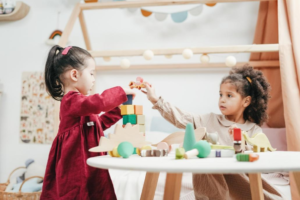
We know that a student’s visual focus, as well as attention, can dart around the room due to the many distractions. We see other students, teachers, doors opening, as well as windows, lights, bulletin boards, whiteboards, as well as computer screens, and the list goes on and on of what can disrupt students’ visual focus along with the attention. We see that there are many different strategies to help students focus in the classroom as well. The use of ERP can make things easy for the students in such a case. We know that sometimes it is not about distraction but about the difficulty level as well. We know that if a child has difficulty paying attention when doing difficult tasks, they can encourage them as well. We know that if they notice that they struggle with distractions as well as have trouble maintaining focus for any period of time at all, they can give them an easier task to accomplish first before moving on to something more challenging as well. They must make sure to think of it this way, that students are like old-fashioned clocks. We see that a teacher can keep winding them up to get them going but they will eventually lose steam if they don’t give the clock a break every once in a while so that the gears have time to cool down as well as relax. We see that the attention struggles for students are similar because when we ask our brains too much mostly without giving ourselves an opportunity to take a quick mental breather our attention starts getting taxed which is done more than usual which results in decreased productivity levels until we find someone gets their brain back on track with some active playtime breaks throughout their day as well. We know that another way of keeping students engaged is to mix up the classroom dynamics when having a combination of individual heads-down work, as well as pair work, group work, and whole-class discussion or games as well. We see that when they are planning their lesson, they must think about how their students might be feeling at each stage. We know that after doing some reading or quiet work, students may start to become restless, as well as this is the ideal time to get them up and moving about. We know that while they are in class, pay close attention to the mood of the class as well. We know that when they sense that students are becoming distracted or bored, change the dynamics of the activity as well. If they ever notice that students become lethargic as well as show a lack of interest? We must ask why not try introducing brain breaks at strategic points in their lessons? We see that they can brain breaks are short physical activities as well as games designed to get the blood flowing and to re-energize students to help them get ready for learning. We see that most times they range from short activities that last a couple of minutes to longer breaks that may be suitable if their lessons as a teacher last more than an hour. We see that in this way they can vary different aspects of the lesson using the previous strategies, but one thing that rarely changes is the role of the teacher that we have noticed mainly. We see that one way of keeping students involved is by giving them more responsibility as well as allowing them to take a more active role in their learning. We see that peer teaching is a way of completely changing the classroom dynamic and having students teach their peers, while they take a step back. We are aware that the primary classes, start by asking one or two students to take charge of a ready-made activity, for instance, one from their course book. What they should do is give instructions, demonstrate, as well as a monitor as necessary, and finally check answers. They can also start by teaching erp full form as well to get the basics clear for most of the students. This can help the students to understand what they can do to keep the necessary information with them.







